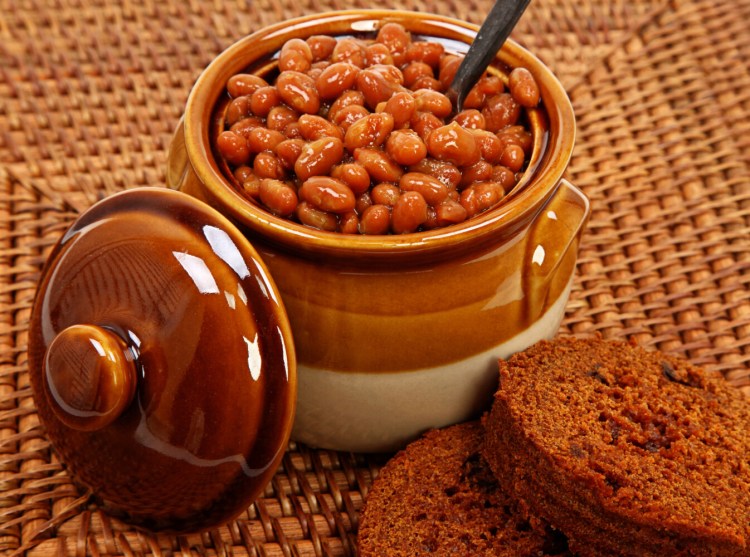The New England tradition of baked beans and brown bread goes back to the region’s early settlers, according to Sandra Oliver, a Maine food historian who lives on Islesboro.
First, the origins of brown bread. Wheat was not widely available in early New England, Oliver said, so poorer people “often ate combinations of coarser grains, like rye or oats, and sometimes legumes ground up to make a kind of flour which they blended with other flours.”
A combination of rye flour and cornmeal resulted in Rye and Indian bread, which was “very dense,” Oliver said. ““It didn’t rise as much as it swelled.”
When wheat was available, it was expensive, so it often was reserved for “fine baking” like pastries and cakes, while Rye and Indian bread became the common daily bread.
Wheat was also added to what was called “thirded bread,” a bread made with one-third wheat, one-third rye and one-third cornmeal. Add a little molasses, and by the mid-1800s you have New England brown bread.
“If you look at a classic New England brown bread recipe, you’ll see that it has one third of each of those major grains, descended from the old thirded bread of the late 1700s to early 1900s,” Oliver said. “It’s more of a steamed pudding, really, than a bread. It had molasses in it, it had sour milk and baking soda, which was more widely available mid-century. “
Once the Erie Canal opened in 1825, wheat flour became much more widely available, and the price dropped. But New Englanders still had a taste for their own brown bread.
Nineteenth-century households typically baked bread and pies on Saturdays, Oliver said. Those went in the brick oven first.
“Then to finish, you put a bean pot in for a long slow baking in a declining heat,” Oliver said. Those beans, along with the brown bread, were Saturday dinner. Often the beans would still be warm on Sunday mornings, providing delicious leftovers.
Today, Oliver said, leftover baked beans in the refrigerator “is like money in the bank.”
“I really like baked beans on toast with a little bit of very thinly sliced onion on it, and some grated cheese,” she said. “You put it under the broiler and what a wonderful lunch that is. Yum, yum, yum.”
Oliver prefers to make her own baked beans using beans she harvests from her garden and dries herself. Still, she was sad to learn that Portland’s B&M plant is moving to the Midwest.
“With the rails ripped up and having to ship beans, I understand why they’re moving it,” she said, “but it’s heartbreaking anyway.”
Send questions/comments to the editors.



